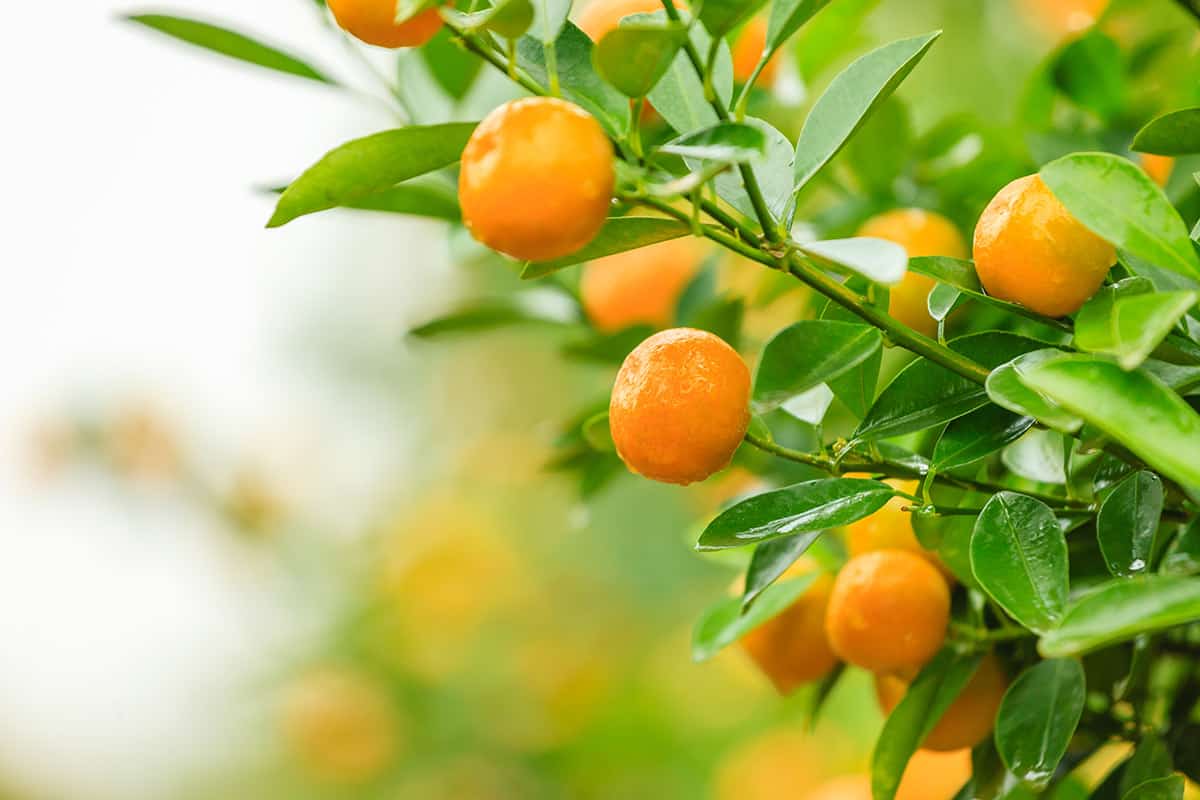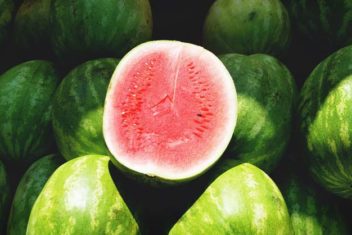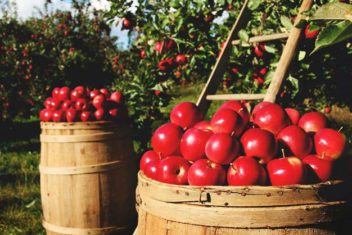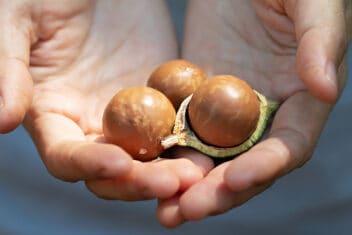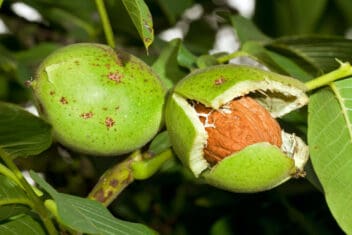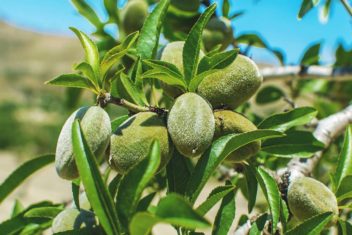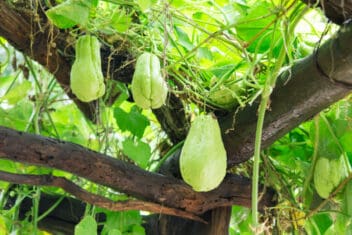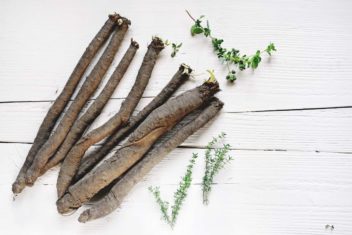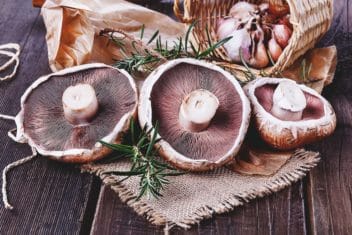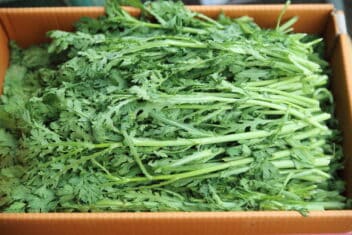Who doesn’t love those tiny tasty oranges known as tangerines? Their skin pulls off easily, and the segments are sweet and delicious. If you’re thinking of growing your own healthy treats, tangerines are a superb option.
Tangerines are a tropical plant, so you need to grow these plants in containers unless you live in a subtropical or tropical region. They handle cold temperatures better than other citrus trees, but they can’t survive a hard freeze.
Let’s take a look at growing tangerines no matter where you live.
Best Tangerine Varieties
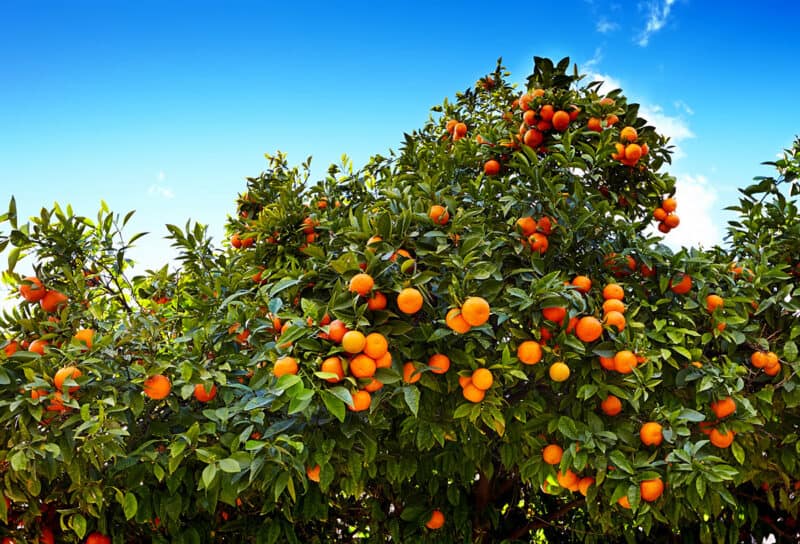
Tangerine trees belong in the same genus (Citrus) as oranges, lemons, and limes. They’re a hybrid of mandarin oranges, and there are a ton of different varieties out there. Here are some we recommend you check out:
- Clementine – Perhaps the most famous, this type is sweet and seedless.
- Dancy – Spicy and pungent. Does well in low water conditions.
- Honey – This one is intensely sweet. Small with lots of seeds.
- Kara – Semi-sweet, large fruits.
- Pixie – Tiny ‘Pixie’ has a tart flavor, with seedless fruits.
- Yosemite – Large, sweet, and richly-flavored fruits.
Planting Tangerines at Home
Whether growing tangerines in a container or the ground, it’s essential to understand their requirements, because that’s the key to success.
Only those living in USDA Zones 10-11 can grow these trees in the ground. Otherwise, all gardeners can grow these trees and move them inside when temperatures fall too low.
Since these are tropical plants, pick a sunny spot for ideal growth. Tangerine trees need a minimum of six to eight hours of sunlight per day: the more, the better.
Tangerine trees prefer soil with a neutral pH range. Avoid commercial mixes that contain too much peat, which is acidic. Look for a basic potting soil for containers and add compost for additional nutrients.
Pick an Ideal Container

If you plan on growing in a container, picking the right one is the first step to success.
You need a container that gives the tree plenty of space for growth and expansion. In general, citrus trees don’t mind being slightly pot bound, but the roots need space to grow and expand.
Don’t go too overboard and grab the largest pot at the store. It needs to be two to four inches wider in diameter and depth than the container it’s in at the nursery. You can re-pot later as it grows larger.
The container needs drainage holes; standing water kills plants. If the container you picked doesn’t have holes at the bottom, use a drill to create a few.
Put the tangerine plant at the same level it was growing in its nursery container (you might need to put some potting soil in the base of the pot to raise it up a bit).
Fill around the rootball with potting soil and give the plant a good drink.
Put the container in a spot where it will get six to eight hours of sun, whether its indoors or out.
Getting Them In the Ground
As tempting as it is to try growing tangerine trees from seeds, chances are it won’t work. If it does work, it’ll take years longer than if you bought a tree from a nursery.
Nurseries sell plants that are grafted onto a root-stock with one to two years of growth. That gives you a head start and makes growing tangerines even easier.
Dig a hole in the ground twice as wide as the exiting container. Remove the tree from its nursery container, gently loosen the roots with your hands, and set the tree into the hole at the same level as it was in the nursery.
Fill the hole with soil, tapping it down into place. Water well; citrus trees need plenty of water to encourage root establishment. Be sure to keep the water moist for the next two weeks with regular watering.
Caring for Tangerine Trees
Now that you have a planted tangerine tree, it’s time to learn how to take care of it. Here are some basic tips.
Provide Plenty of Water
In the beginning, tangerine trees need plenty of water to help them settle into place. As the tree ages, gradually scale back with water.
Too much water drowns the roots and promotes disease, so while tangerines need plenty of water, avoid overwatering. Always be consistent with the amount of water you provide because fluctuating amounts can cause the fruits to split.
The best technique is to water the soil around the tree and let it soak in before adding more water. Watering once or twice per week is sufficient in most cases.
Don’t Forget to Fertilize
Container grown tangerine trees and those in the ground need to be fertilized twice per year. When new growth appears, it’s time to apply the first fertilizer application.
Apply a fertilizer designed for citrus trees because they use heavy amounts of zinc, nitrogen, and iron. Always follow the directions to avoid burning the plants.
Some people prefer to use fertilizer spikes like the ones from Jobe’s Organics to feed trees in the ground.
Mulch Around the Tree
To retain moisture, apply a two to three-inch layer of mulch at the base of your tangerine tree. Keep the mulch off of the trunk, but make a one to two-foot circle around your tree. Reapply the mulch each spring.
Winterize Potted Tangerines Indoors
So long as the outside temperatures are above 40°F, it’s safe to keep your tangerine trees outdoors. Always move your plants indoors and outdoors gradually, or the plant will go into shock and lose leaves.
Once your tangerine trees are indoors, water when the top of the soil feels dry. Keep them in an area with bright indirect light.
Repot Every Few Years
As the trees grow, they need to be re-potted every three to four years. Don’t go overboard when selecting the new pot. Move up one or two sizes each time.
Prune When Needed
Unlike other fruit trees, tangerine trees don’t require regular pruning. The only time you need to prune is when you notice broken branches or fruit failing to set or develop properly.
Some tangerine trees overproduce, leading to branches weighed down with too much fruit. Thin the fruits shortly after the trees flower and start producing fruit.
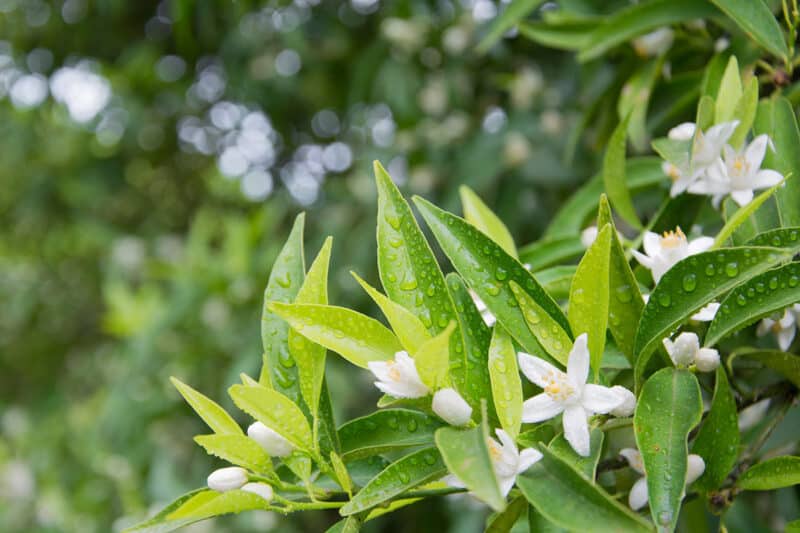
Always prune dead or diseased branches, as well as crossing branches. Crossing branches are problematic because they rub against each other, creating small wounds that bacteria might enter through.
It’s best to prune in the early spring after the last frost but before new growth appears.
Pests & Diseases That Bother Tangerine Trees
Tangerine trees are prone to a variety of pests and diseases. Here are a few of the most common.
Brown Rot
If you find water-soaked lesions on the fruit, you might have brown rot. The lesions are leathery and tan to dark brown and have a strong smell. You might also notice the leaves, twigs, and flowers turning brown.
You can prevent this by keeping the grass around the trees cut and using proper irrigation methods. Prune off branches that might touch the ground. If the fruits are infected, it could cause them to drop off.
Use a copper fungicide and spray it on the foliage to protect your trees.
Citrus Canker
Here is a bacterial disease that causes raised lesions on the leaves, most often at the leaf margin. There could be lesions present on the twigs or fruit, and most are surrounded by a halo.
Citrus canker can cause serious fruit loss if it takes over your tree.
Unfortunately, there is no way to stop the disease. Most experts recommend removing and destroying the tree to stop it from spreading to other fruit trees nearby. Some say that copper sprays help to get rid of the bacteria; it’s worth a try!
Citrus Leaf Miner
These pests leave thin, winding trails on the leaves, and a bad infestation leads to curled or distorted leaves. The adults are small moths, and they lay eggs inside of the leaves. After hatching, the larvae feed on the leaves’ interiors.
In most cases, yields are unaffected by these pests, but insecticides can be used for heavy infestations. Prune off branches that might be damaged by the infestation.
Soft Scales
These pests cover the leaves in a sticky substance called honeydew, which increases the risk of sooty mold. Soft scales reduce the tree’s growth and vigor, and cause the leaves and fruit to drop off of the tree.
You might notice black or brown, flattened insects on the leaves, twigs, and branches. While most infestations aren’t serious, that doesn’t mean you should let them go. Horticultural oils are an acceptable way to control soft scales.
Harvesting Tangerines
Tangerine trees take three to four years (assuming you grow a grafted tree from a nursery) to bear fruit. It takes time and patience to enjoy homegrown tangerines.
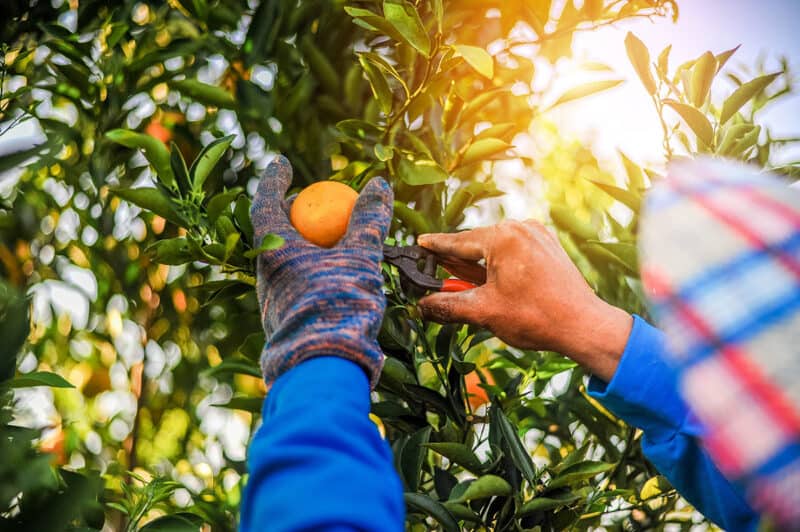
It’s time to harvest tangerines when the fruit is the right shade of orange and starts to soften. Now is the right time to do a taste test (the best part).
Cut one of the fruits from the tree with hand pruners. If the fruit is the right mixture of sweetness, use the pruners to cut the other fruit from the tree.
Freshly picked tangerines last around two to three weeks at room temperature. If you store them in the refrigerator, they’ll last longer, but don’t store them in plastic bags because it increases the risk of mold.
